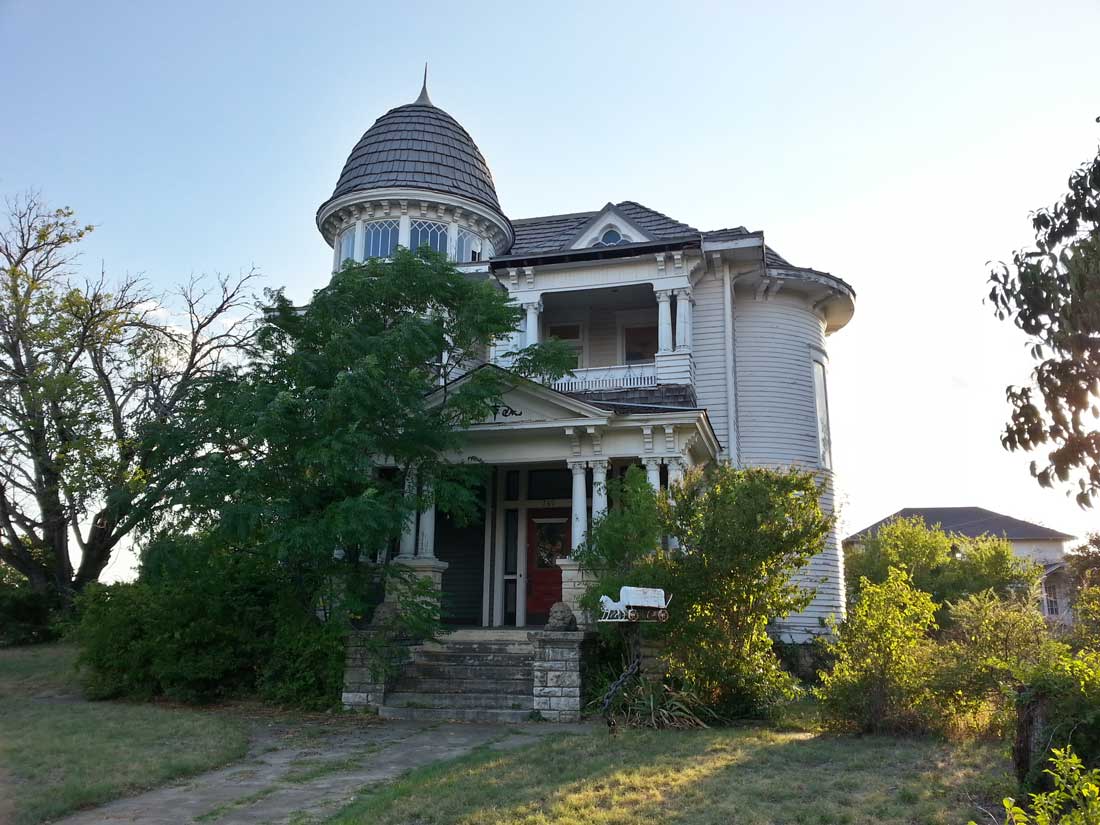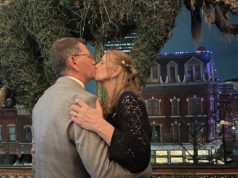Downtown Fort Worth is partially ringed by close-in residential neighborhoods where many older homes are charming, some dilapidated, and some potentially historic.
In such neighborhoods, historic preservationists see chances to save and celebrate the city’s history. Developers, on the other hand, see opportunities to tear down modest older homes and put in bigger, taller residences with smaller yards and higher price tags. As center-city residential opportunities grow ever more limited and expensive, developers hope to cash in on the appetite for close-in, more urban living.
Those trends are at the heart of what preservationists like Historic Fort Worth chairman John Roberts say is a growing threat to historic buildings in a city that has traditionally valued its heritage but that may need more tools to save it in the face of development pressures.
“We’re having tear-downs all over the city,” he said. “People are seeing that their lot is more valuable than the house that’s actually on it, and they’re demolishing those houses and building bigger, better, grander houses on those locations.”
Libby Willis, president of the Oakhurst Neighborhood Association and former director of the National Trust for Historic Preservation Fort Worth, compared what’s happening in places like Arlington Heights to similar neighborhoods in Dallas.
“There has been the wholesale disappearance of neighborhoods that were kind of the same era as Arlington Heights. Because they weren’t historic districts, they went away,” she said. “They’re just gone. It was a complete change in the character of the neighborhood.”
Building larger, more expensive homes can also cause increases in property taxes steep enough to force out current residents, Willis said.
And it’s not only privately owned homes that historians fear for. Roberts is part of a committee working to get historic designations for city-owned buildings.
Every year, Historic Fort Worth releases a list highlighting the city’s most endangered landmarks. The list “has sparked interest in some historic structures, and it has gotten people to notice buildings that we might have lost,” said Fort Worth historic preservation officer Liz Casso. “Buildings have been saved as a result.”
Roberts thinks the city’s historic preservation ordinance needs more enforcement powers to delay demolitions of potentially historic structures.
“We need to make it a little easier to get buildings designated, and if we could, find a way to find more incentives for doing so and for restoration projects,” he said.
The Will Rogers Memorial Center, a Fort Worth icon, made the endangered list last year.
“It’s a city-owned building, and it’s not designated, and it’s one of the most historic buildings in the entire city,” Roberts said. “Now the city staff and officials say it’s in good hands — ‘We’re good stewards.’ ”
It may be in good hands now, but the people taking care of it aren’t going to be around forever, he said. The Fort Worth Community Arts Center building just across the parking lot is on this year’s list.
In West Fort Worth, an empty lot is all that remains of a 100-year-old house on Broad Avenue that belonged to Fort Worth Star-Telegram publisher Amon G. Carter Sr. Next door, the award-winning house that belonged to his daughter Ruth Carter Stevenson met a similar fate a couple of months ago.
The homes are just two of a handful of culturally significant Fort Worth landmarks the city approved for demolition in recent years.
The 7th Street Theatre with its prominent marquee is a not-so-distant memory. And in 2004, Tarrant County College ignored the recommendations of preservation experts and tore down buildings along the historic Trinity River bluff to make way for a new campus before the buildings’ historical value could be assessed.
Earlier this year, Texas Wesleyan University asked the city’s Historic and Cultural Landmarks Commission for permission to remove the historic designation from the Dillow House, a 90-year-old home across the street from the campus, so it could be razed to make room for a community revitalization project.
When the request was denied, the university went around the landmarks commission, asking the Zoning Commission and then the Fort Worth City Council for approval.
Historic Fort Worth challenged the decision in court, essentially halting demolition — for now.
The case is significant, because it could set a precedent for future demolitions, Roberts said.
With the Carter homes, the landmarks commission had no chance to object. Because the residences were privately owned and weren’t designated as historical landmarks, there was no legal protection against demolition.
Casso explained that city staffers review every demolition request to make sure that no buildings with historic designations get destroyed. But the process does nothing for historic buildings without that official designation.
“There was really no way to let the public know, or at least no public setting to make them aware of the cultural, historic significance,” Roberts said. “There was no hearing by the landmarks commission on demolition.”
Despite the recent controversial cases and his own wishes for stronger enforcement powers, Roberts said Fort Worth has a good preservation ordinance.
“It’s one that many cities would like to have,” he said. “And it’s important for the city council to uphold that ordinance for locally landmarked buildings.”
Some cities offer slightly more protection for potentially historic structures. In Austin, all applications for partial or total demolition of properties more than 50 years old must go through the Austin Planning and Development Review Department.
“If staff determines it retains its historic appearance sufficiently, we can take it to the historic landmark commission to give them the opportunity to initiate historic zoning if they feel that’s warranted,” said Alyson McGee, Austin’s deputy preservation officer. “If they don’t think historic zoning should be initiated, then the [demolition] permit gets [approved].”
The process makes possible a hearing at which members of the public can express their views, McGee said.
“What it’s avoiding is that [situation] where there’s a really important building, and it’s not currently zoned historic, and everybody wakes up one day and it’s gone,” she said. “And nobody’s had an opportunity to comment on it.”
The city rarely approves a historical designation against the owner’s wishes, but it does happen, she said.
In Fort Worth, the challenges involved in saving historic structures vary from case to case, Casso said. “Sometimes … the owner is not interested in the history of the property or historic designation,” she said. “Sometimes … it is too expensive for the owner to repair or restore the historic structure.”
The Garvey-Viehl-Kelley house on Samuels Avenue, with its Queen Anne-style architecture, is one example. It’s designated as a historic landmark but has fallen into disrepair and is for sale. Like the Dillow House, its condition makes it vulnerable to developers.
Casso said the commission is committed to preserving the city’s cultural and historic landmarks.
“I believe the current regulations are very effective at protecting our locally designated historic structures, most especially if they are designated HC (historic and cultural landmark) or HSE (highly significant and endangered),” Casso said.













I know it’s not the same level of historical significance or anything, but in our little neighborhood near TCU, there are bulldozers at work every day. One entire contiguous block taken out last year, another (almost full) block razed just this month, and at least 13 properties staked out for bulldozers in the near future. Along with the houses, the older trees are knocked down as well.
We get huge TCU parking lots in return, and cookie-cutter duplexes, and townhouses, and 2-story “single family dwellings” packed with students and well…you get the picture.
Colorado has an excellent track record for community interest in preservation of historic homes– and the results are aesthetic. The interest must be raised at the grass roots level however. Thank you for this article! (just goes to show how this paper really can be a marvelous little gem-compared to the FWST-whew!)
One of the challenges in all this is determining what is actually historic and culturally relevant. Just because you think it is – doesn’t mean I will.
Prior to renovating a building on Magnolia – we chose to appeal to the landmarks commission to have the building designated as HSE (highly significant and endangered) During our process, I found it very interesting that many were disappointed that we also requested a zoning change so we could utilize the property for commercial purposes (previously multi-family) The building was an eyesore and a blight on Magnolia. None of the “whiners” put their own money up to take on the project but they wanted to complain that I wasn’t doing it the way they wanted. If I’m willing to scrape my own money together and I comply with the existing laws – then shouldn’t I be able to do what I choose? It’s far cheaper for people to whine about what they don’t like than it is for them to actually put their wallet where their mouths are. The HCLC does a great job of protecting what is in their purview to protect.
Although I think you did a great job renovating the quad on Magnolia and the exterior was maintained nicely, I too would have liked to have seen it kept as a residential property. I live two blocks off of Magnolia and although I like that the street is being enlivened with restaurants and bars, I would prefer to see it developed into an actual working neighborhood with maybe some green grocers etc. I would love a few shops that I could walk to and visit for daily needs. That is just my opinion and I hope that the fact that I have no money doesn’t preclude me from expressing (whining about) it.
I agree with you. That pretty much explains the real issue as to why this is happening, that who ever has the money is the one with the most control and not the citizens who live in the community. Their wants and needs are null and void unless they can shell out a bunch of cash.
We looked into buying the Garvey house to restore it, but they want $2 million for it. Granted the property goes all the way to the river, but the house is in such disrepair that it will probably take $2 million just to restore it!! The income potential is there, but you have to be able to afford it and the renovation before you can realize the income!!!
This is where the city and/ or state might consider “stepping in” with either tax breaks or funds to preserve historical homes. That being said ,$2 millon sounds like an opportunistic “rip-off” on the part of whoever is controlling the property.
You might not normally associate basketball players with insurance companies, but Le – Bron James (the All-Star forward for the Cleveland Cavaliers), and State Farm Insurance have partnered up in hopes that “Bron-Bron” will help
snag the market of the young adult policy holders,
particularly in the areas of renters and auto insurance for State Farm.
, who was promoting her hit album, and single of the same name,
The Glamorous Life. Geoffrey Royce Rojas was born on May
11, 1989 and raised in The Bronx, a borough of
New York City, New York.